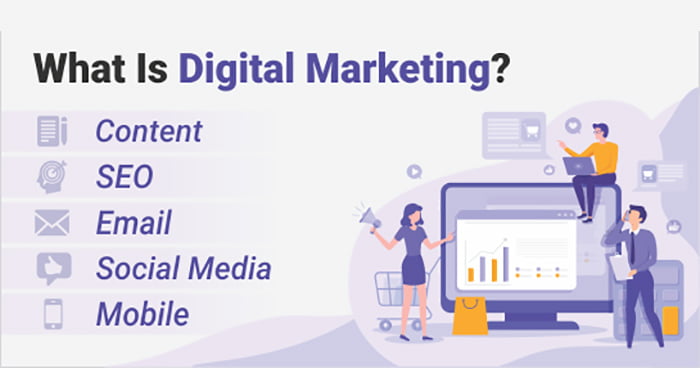These days, all kinds of businesses and organizations need to have a strong online presence and go beyond their rivals. Search Engine Optimization (SEO) is a significant part of digital marketing. So, it is one of the most crucial ways to help businesses improve the website visibility and gain more organic traffic. Using SEO requires a lot of time and effort. However, the result is more effective than other strategies. It is good to know that SEO is an ongoing progress and requires regular monitoring, analysis, and adaptation to the latest search engine algorithms. In this article, I will discuss ten SEO steps to achieve a website’s goals and improve its ranking on search engine result pages.
Table of Contents
Toggle
Step 1: Create a List of Keyword Research
Keyword research is the basic principle of any successful business. There are repetitive keywords and phrases that the target audience uses to search for your website information, products, and services. What keywords present your business the best? First, do research and make a list of the most relevant ones. What are the tools? You can use Google Keyword Planner, SEMrush, Moz Keyword Explorer, etc. Besides, you can check your rival website to get some ideas. What are the criteria? High search volume and low competition are the most crucial features of keywords. Then, SEO experts and content writers place the keywords strategically throughout the website content and meta tags.
Step 2: On-page Optimization
The final goal of all businesses is to improve their organic ranking, so first, they need to optimize individual web pages, that is, on-page optimization. This process focuses on different factors, including keyword density, title tags, meta description, URL structure, and header tags.
Let’s explain them in detail. Keyword density is the percentage of time a keyword is used on a webpage compared to the total number of words on the page. It helps to find out if a website is relevant to specific keywords. Title tags are clickable links in search results and present the exact content on the page. It should be keyword-rich and concise, too. A meta description is what comes right under the title tag and is a summary of the page content.
URLs are supposed to be well-organized. So search engines can understand the content easily. Header tags ( or H1, H2, etc.) are article headings. Search engines usually look for tags to understand the page structure. Besides, they clearly show if the content is a priority.
Step 3: Improve User Experience
Various factors can affect the success of a business, and one of the most crucial ones is user experience (UX). When a website creates a positive experience for users, search engines realize that and put it first. Websites deserve good rank and repeat visits when they offer optimized load speed, improved site navigation, enhanced readability, and ensured mobile responsiveness.
Step 4: Create Content based on keywords
SEO strategy needs engaging content to be effective and achieve its goals. There are some qualities that SEO experts have in mind when it comes to content, including being high-quality and relevant. Besides, it should attract users to visit the website for the first time and invite them to keep checking it. It is also significant that the content can reduce bounce rates. When people search for information, they usually look for a trustworthy website. Users often follow a website that offers valuable insights, addresses customer issues, and responds to user questions. How do search engines rank a website? When writers use target keywords naturally on the content, meta tags, and headings, search engines consider the website relevant and rank it based on this fact. The next criterion is being active and publishing fresh content regularly on blogs.
Step 5: Build High-quality Links
There are different ways that websites can prove that they are trustworthy and relevant, and as a result, search engines value them. One of them is link building, a process of getting external links from other reliable websites. It is crucial to build natural and relevant links. Efficient link-building strategies include creating content worth sharing, sponsoring industry influencers, and participating in local directories. That is how you can improve your website ranking in search engine result pages (SERPs).

Step 6: Optimize Local SEO
Sometimes, businesses target a specific geographical area and need to attract potential customers in a region. So, they try to enhance their visibility in local search results. How do they do that? Businesses make a plan and implement different items, such as phone numbers, address information, and business hours, in a consistent format on different website pages. It increases website visibility. There are other crucial techniques, too, including claiming and improving Google My Business (GMB), receiving online reviews, and setting local business directions.
Step 7: Enhance Technical SEO
SEO experts need to review the website from time to time and optimize it. They need to configure the website properly and improve the website architecture, mobile-friendliness, XML sitemaps, and site speed. As a result, search engines can easily crawl and index the website. In addition, website visibility is enhanced. What is essential technical SEO? They are optimizing images, implementing schema markup, and fixing broken links. All these factors can improve the website’s performance in a long time.
Step 8: Social Media Integration
It is hard to ignore the fact that, these days, social media platforms have significant impacts on different aspects of businesses. So, the next crucial factor that helps SEO strategies increase a website’s ranking is the integration with social media. As many people use Instagram, Facebook, Twitter, and other platforms every day, it can bring more customers to the website.
Besides, social media platforms offer an opportunity to share related content, engage with potential customers, and promote services or products. How can social media help to enhance SEO efforts? The sharable content can encourage users to link back to the website. Besides, comments, likes, and shares have a direct effect on SERPs.
Step 9: Analyze and Monitor Your Performance
Businesses need to monitor and analyze user’s behavior and interactions for different reasons all the time. One of them is for optimizing the website. The data helps them to make informed decisions about improving user experience and SEO strategies.
Step 10: Continuous SEO Improvement
As SEO algorithms usually change, it is crucial to check and update the website regularly. You should conduct new keyword research, share valuable content, optimize website content, and look after technical aspects. So you can ensure a smooth user experience.
Conclusion
SEO is a practical strategy to attract organic traffic but requires continuous monitoring and optimization. However, it takes time to get the result that improves your website ranking and visibility.






